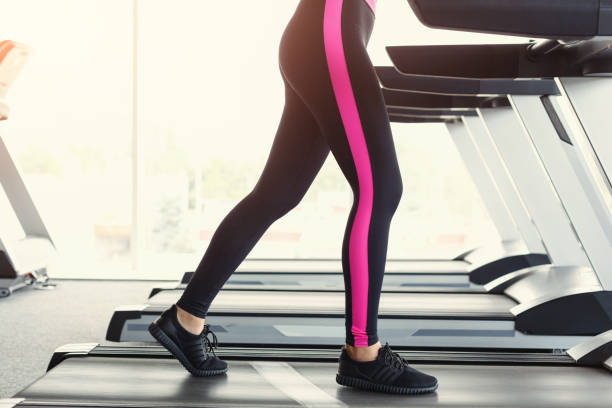Nowadays there is some kind of gadget for everything to make your exercise or training experience easy and enjoyable.

Picture: iStock
Are you using the correct training gear? Are you aware that different training types require different gear?
I ask this because I often spot men and women running races, going to the gym or cycling with inappropriate gear. It might be that they are not aware that the gear is inappropriate or that funds aren’t adequate for them to get the correct gear.
Nonetheless, let’s highlight some training gear dos and don’ts:
Sports bra

Picture: iStock
On more than one occasion, I have seen ladies not wearing a sports bra and instead wearing a normal day-to-day bra or a bra that has inadequate support, resulting in their boobs juggling as they run.
I am 100% sure that this is uncomfortable and potentially causes breast pain. Over time, this may lead to overstretching of the ligaments in the breasts, resulting in sagging.
Some forms of exercise, like yoga and pilates, do not require heavy-duty sports bras. Any sport that is high impact and results in the breasts moving up and down or side to side like running, netball, tennis or jumping exercises requires a heavy-duty sports bra.
Unsupported breasts can lead to upper back, shoulder and neck pain. When you go shopping for a sports bra, make sure you ask the shop assistant to help you get the correct bra for your chosen sport and, specifically, the correct size. Usually, day-to-day bras are not the same size as sports bras, so you may need to be measured at the store.
It is also not necessary for women with larger breasts to wear two bras for exercise. There are brands that cater for bigger breasts with sufficient support.
Tights, leggings

Picture: iStock
I have often seen ladies wearing transparent leggings in the gym and on the road while running. This looks unpleasant to the onlooker and perhaps the wearer is unaware and would be embarrassed if they knew.
Transparent tights could be due to one of two reasons: the first could be that the wearer is potentially wearing a size too small, thereby stretching the tights to the maximum and making them transparent. In this case, my suggestion would be when buying tights or leggings, try them on in front of the mirror, bend over and check for transparency.
The second reason could be the choice of tights, cotton versus Lycra. Cotton leggings tend to be the ones most susceptible to transparency over time. So my suggestion would be if you train regularly, opt for Lycra.
I also once spotted someone wearing regular tights while cycling. My guess was that they were new to the sport and hadn’t been educated on the correct gear.
Newbies, take note: cycling tights have padding in the crotch area. This looks weird but it’s a necessity. The padding’s primary purpose is for protection against pressure and impact from the road surface and the saddle.
Footwear

Picture: iStock
Short distance running, long distance running, trail running, walking, hiking, cycling and tennis, to name just some activities, all have different types of shoes. Although some shoes are specific like in golf and cycling, it’s not to say that one can’t use a pair of shoes for different sports.
For example, if you use running shoes for walking, that’s not a problem, but if you use walking shoes for running, over time you may just injure yourself.
The difference between running and walking shoes is the tread on the sole of the shoe. Running footwear has a deeper tread that allows the shoe to have a better grip because of the impact of running. Walking shoes are similar to gym training shoes and don’t have a deep tread. In fact, they are both quite flat underneath.
Another example is short distance shoes versus long distance shoes. The long distance shoes typically have a thicker sole than short distance shoes.
Many of us fall prey to buying shoes based on colour or design, instead of understanding what the shoe is made for. My suggestion is that when you want to buy a pair of training shoes for your chosen activity, do a little bit of research. Read up on different shoes before going into a store.
Alternatively, engage a sales assistant and ask them to compare two or three pairs for you before buy
Protective gear and accessories

Picture: iStock
Protective gear can range from sweat-resistant thermal gear for training in winter, sweat bands around your head to ensure your sweat doesn’t blind you; to training gloves that prevent callouses on the palms, or ones meant to keep hands warm during outdoor training in winter.
There are also cellphone pouches, key pouches, bluetooth earphones for you to listen to music while training. For outdoor training, there are waist belts for water bottles and money and even miniature backpacks to carry snacks. The list is long.
Nowadays there is some kind of gadget for everything to make your exercise or training experience easy and enjoyable.
Zulu is a qualified biokineticist and cofounder of PopUpGym. Follow her on Instagram: @letshego. zulu Twitter: @letshegom Facebook: Letshego Zulu
For more news your way, download The Citizen’s app for iOS and Android.





